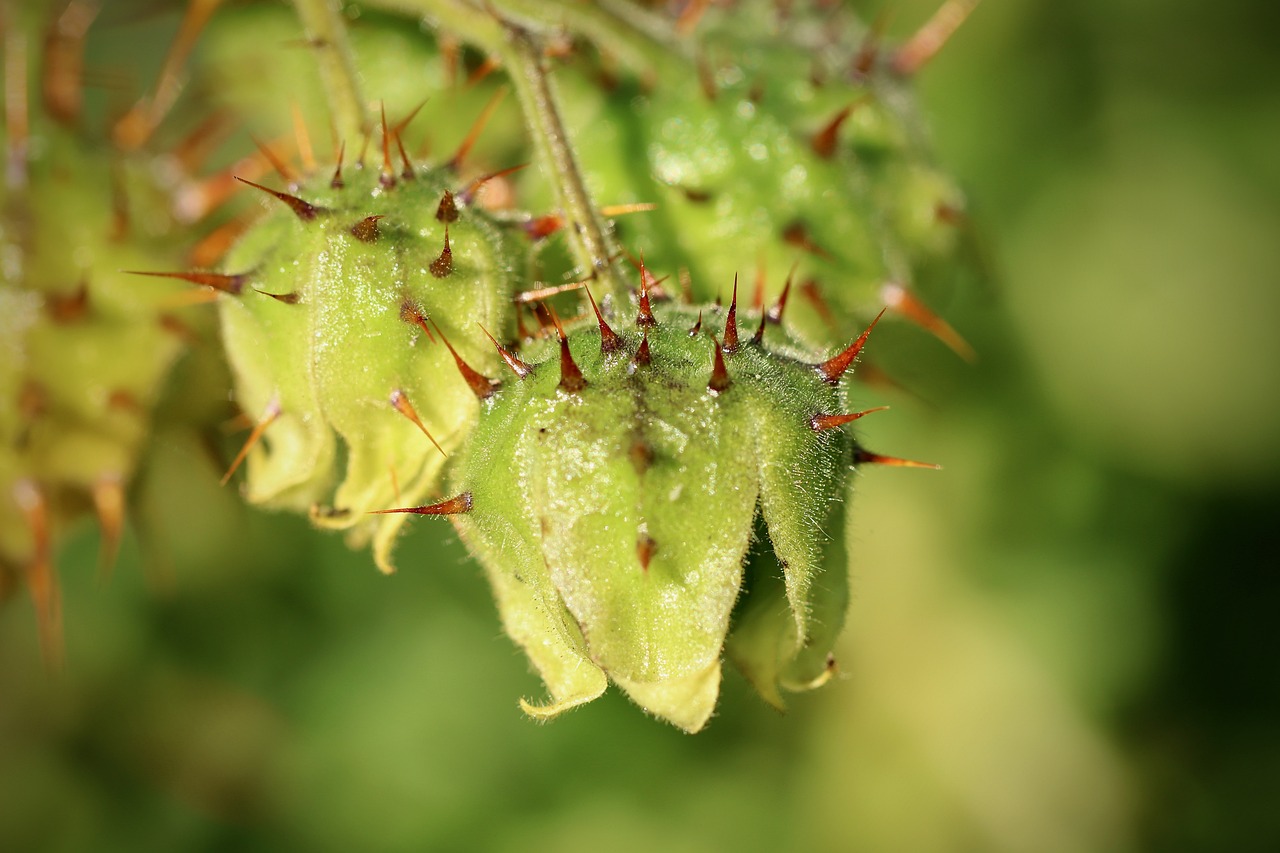“The beautiful rose has thorns,” “a thorny path”—these expressions highlight the deep connection between thorns and plants. The genes that control these thorns are now beginning to be identified. Moreover, similar genes have been identified not only within a single plant genus but across multiple genera.
Thorns on Plants: Necessary in Nature but Unwanted in Horticulture.
How many thorny plants do you know? Roses and thistles are perhaps the most common examples. Succulents like cacti and aloe also have thorns. As for vegetables, tomatoes have thorns on their stems, and cucumbers have thorns on their fruits. If you’re not careful, you might get pricked.
In nature, thorns serve as a means of defense against predators and are involved in stress tolerance and moisture retention. They are very important organs for surviving in the harsh natural environment.
On the other hand, the horticultural varieties that we consume and admire have fewer thorns as a result of breeding. When we use plants, thornlessness is of high value, considering production efficiency and added value.
To create “thornless” varieties, a thornless plant was once discovered and used in breeding. Over time, thornless or small-thorn varieties became commonplace in horticultural species. However, it was not clear how these differences occurred.

Comparing the Genes of Wild Solanaceae Species with Thorns and Thornless Horticultural Varieties.
We compared the genes of wild Solanaceae plants that still have thorns with those of cultivated thornless Solanaceae.
As a result, it became clear that mutations in the “cytokinin” synthesis gene, a plant hormone, lead to the disappearance of thorns. There are various types of cytokinin synthesis genes, but when a gene named LONELY GUY (LOG) mutates, the thorns disappear. “Lonely guy”—what an evocative name.
There are various mutation patterns that lead to thorn loss, but 14 out of 31 patterns involved this gene. Although thorn formation is triggered by the interaction of complex gene groups, considering that half of these are controlled by the LOG gene, it can be said that the LOG gene is a very important gene in thorn formation.
Similar Genes Confirmed in Roses and Berries.
We discovered that the LOG gene controls thorn formation in the Solanaceae family. But what about other plant genera?
As our analysis progressed, we found that thorny plants such as date palms and roses also have genes similar to the LOG gene sequence, and that varieties lacking this gene were thornless.
Furthermore, we identified the LOG gene in Australian native wild Solanaceae species and berry species, which have not yet established thornless varieties. By using genome editing technology to precisely mutate this gene, we succeeded in producing thornless individuals.
The LOG gene is widely present in plants and is particularly involved in thorn formation in thorny plants.
Assessing the Value of “Thornless”.
In the horticultural varieties we consume, the absence of thorns is an important trait linked to productivity. Thorns can cause injuries to workers and damage agricultural machinery. Additionally, on the consumption side, extra effort is required to avoid injury or to process the plant in a way that does not spoil its taste.
The LOG gene, discovered in the research introduced this time, offers the possibility of removing thorns from thorny plants. For more efficient agriculture and consumption, varieties that struggle with the presence of thorns might be improved in the future by mutating the LOG gene.
On the other hand, humans are interesting creatures, and some may think “thorns are what make it good.” For example, roses might be considered noble because of their thorns. Even if we can remove thorns from all agricultural products using the LOG gene, there may still be varieties where thorns are preserved, and I predict that such varieties will continue to exist.
Reference(published: 2024/08/02)
Convergent evolution of plant prickles by repeated gene co-option over deep time.



コメント